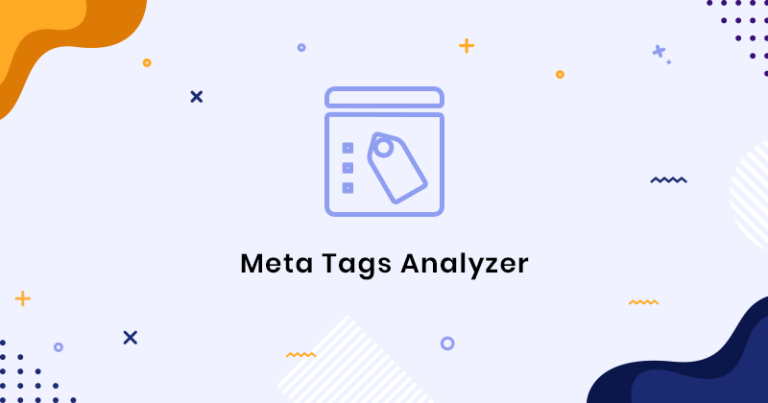Unlocking the Power of a Link Analyzer Tool: Boost Your SEO Like a Pro!
In the ever-evolving world of SEO, links are like the golden tickets that lead to a website’s successor its downfall. If you’re serious about climbing up the Google ranks, there’s no escaping the need to understand the link structure of your website. Whether it’s about examining inbound links, checking out your competitors’ backlinks, or tracking your own progress, a link analyzer tool can make all the difference!
But what exactly is a link analyzer tool? And why is it so crucial for SEO? In this article, we’ll dive deep into everything you need to know about these essential tools. Let’s get started!
What is a Link Analyzer Tool?
A link analyzer tool is a software application or online platform designed to help website owners and SEO professionals investigate and analyze the links associated with a specific website. It provides insights into both inbound links (links coming into your site) and outbound links (links going from your site to others). Essentially, it’s the X-ray machine of the internet, letting you peek into the hidden aspects of your website’s link profile.
Why Do You Need a Link Analyzer Tool?
There are plenty of reasons why using a link analyzer tool is a smart move:
- Improving SEO: Gain insights into how well your backlinks are performing, what needs fixing, and where you can gain new link opportunities.
- Monitoring Competitors: See where your competitors are getting their links and how you can compete.
- Quality Control: Ensure that your outbound links don’t lead to spammy or harmful sites.
- Boosting Domain Authority: Track and build a stronger backlink profile to enhance your website’s credibility.
By now, you’re probably itching to know how a link analyzer tool can help you specifically. Keep reading!
The Anatomy of a Link Analyzer Tool: Key Features to Look Out For
Not all link analyzer tools are created equal. Here’s a rundown of the key features you should look for when choosing one:
1. Backlink Analysis
A solid link analyzer tool will provide detailed information about your site’s backlinks. Look for these metrics:
- Number of Backlinks: Quantity matters, but quality matters more!
- Referring Domains: How many unique domains are linking to your site? The more diverse, the better.
- Anchor Text: Check what words or phrases are used to link to your site.
- Follow vs. No-Follow Links: See how many links pass on SEO value (Do-Follow) versus those that don’t (No-Follow).
2. Competitor Analysis
Why not let your competitors do the hard work for you? A great tool will allow you to:
- Spy on Competitors’ Links: Understand which sites are linking to your competitors.
- Gap Analysis: Identify link opportunities that your competitors are capitalizing on, but you’re missing out.
3. Broken Link Checker
No one likes clicking on a dead link! Make sure the tool offers:
- Detection of Broken Links: Identify links that lead nowhere (404 errors).
- Redirect Suggestions: Get tips on fixing or redirecting broken links.
4. Link Quality Assessment
A link isn’t just a link—some can help you rank, while others can harm. Features to consider:
- Spam Score: Spot harmful or low-quality links.
- Link Source Quality: Evaluate the authority of the linking domain.
- Content Relevance: Are the links contextually relevant to your site’s content?
5. Historical Data
Ever wondered how your backlink profile has evolved over time? Historical data lets you:
- Track Changes: Monitor the gain or loss of links over months or years.
- Assess Trends: See which types of content have garnered the most links in the past.
How to Use a Link Analyzer Tool to Boost Your SEO
Okay, so you’ve got your link analyzer tool loaded up—now what? Let’s break it down step-by-step:
Step 1: Audit Your Backlinks
First and foremost, you’ll want to see what you’re working with. Run a comprehensive audit of your current backlink profile. Look out for:
- Low-quality or spammy links
- Irrelevant anchor texts
- Sites with low domain authority linking to you
Step 2: Disavow Toxic Links
If the tool flags any links as potentially harmful, disavow them using Google’s Disavow Tool. These links can do more harm than good, so it’s better to cut them off sooner rather than later.
Step 3: Identify Competitor Strategies
Analyze the backlink profiles of your top competitors. Where are they getting their strongest links? Can you replicate their strategies or find even better opportunities?
Step 4: Optimize Internal Links
Your tool isn’t just for external links. It’s time to examine your internal linking structure:
- Are there pages on your site with too many outbound links?
- Do you have orphan pages (pages with no internal links pointing to them)?
- Can you add more internal links to important pages to pass on link juice?
Step 5: Monitor Your Progress
SEO is an ongoing effort, and the link landscape is constantly shifting. Schedule regular link audits to stay on top of changes and opportunities.
Top 5 Link Analyzer Tools You Should Consider
There are dozens of tools out there, but here are five tried-and-tested options that many SEO professionals swear by:
- Ahrefs
- Excellent for competitor analysis
- Comprehensive backlink database
- User-friendly interface
- SEMrush
- Powerful SEO suite with backlink analysis
- Great for tracking changes over time
- Competitor gap analysis
- Moz Link Explorer
- Reliable data on domain authority
- Highlights spam scores for harmful links
- Ideal for backlink audits
- Majestic SEO
- Provides Trust Flow and Citation Flow metrics
- Focused on link quality over quantity
- Affordable and accurate
- Ubersuggest
- Budget-friendly option
- Provides useful backlink data
- Good for small businesses or solo marketers
Common Link Analyzer Tool Mistakes (And How to Avoid Them)
Nobody’s perfect, but when it comes to using a link analyzer tool, these mistakes can cost you big time:
Mistake 1: Ignoring No-Follow Links
No-follow links don’t pass on SEO value, right? Well, not exactly. Some no-follow links can still drive traffic and build brand authority. Keep them in mind.
Mistake 2: Chasing Quantity Over Quality
Having a large number of backlinks might look impressive, but if they’re from low-quality or spammy sources, they can do more harm than good. Always focus on quality first.
Mistake 3: Focusing Only on Backlinks
While backlinks are crucial, don’t forget to use your tool to examine internal links too. They play a significant role in how search engines crawl and index your site.
FAQs About Link Analyzer Tools
1. What’s the best free link analyzer tool?
While paid tools often offer more features, Ubersuggest and Google Search Console are excellent free options for basic backlink analysis.
2. How often should I use a link analyzer tool?
It depends on your goals, but a monthly check-up is a good starting point. If you’re running a large campaign, weekly might be better.
3. Can a link analyzer tool improve my SEO?
Absolutely! By identifying opportunities and flagging potential risks, a link analyzer tool can provide a clear roadmap to a healthier, stronger backlink profile.
Conclusion
In the world of SEO, links are like the glue that holds your strategy together. From assessing your own link profile to spying on competitors, a link analyzer tool can help you navigate the complex web of backlinks with confidence. Remember, it’s not just about getting more links—it’s about getting the right ones.
So, what are you waiting for? Dive into the world of link analysis, optimize your strategy, and watch your rankings soar! Whether you’re a seasoned pro or a newbie in the SEO game, using the right tools can make all the difference. Happy linking!






